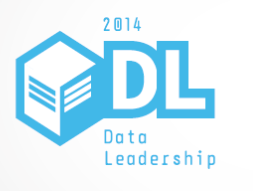Senior IT leaders from Network Rail, UBS Investment Bank and The Salvation Army will speak at this year’s return of Information Age’s flagship conference Data Leadership, it has been announced.
Data Leadership, which is dubbed ‘the thinking person’s big data event’, is for senior IT executives who are not drawn into hype, but do recognise opportunities. They already understand big data and don’t need another event to tell them what it is. ??
Instead, they’re now interested in becoming leaders in generating business value from data. This includes looking at the subject from an analytics and intelligence angle, but also from an infrastructure and transformation perspective, strategy and innovation, and security and governance.
This 360 view of how to approach data in the enterprise gained much praise at last year’s Data Leadership conference, and Information Age has revealed it will return on 30 October 2014 in Central London.
Simon Goodman, head of information systems strategy at Network Rail, will show attendees how big data is improving Britain’s railways and benefiting the organisation on a large scale.
Paul Banoub, director of BI services at UBS Investment Bank, will present five ways to create a BI Centre of Excellence in the enterprise and share his expertise around analytics and data visualisation, while Salvation Army CIO Martyn Croft will discuss how he secures data at one of the world’s largest charities.
Meanwhile, Stephen Devlin, CTO at Macmillan Science and Education, will share how his organisation transformed to a digital enterprise, and Salesforce.com’s chief scientist JP Rangaswami, also director at the Web Science Trust, will provide insight into how data science can generate significant business value.
‘CIOs and other IT decision makers are sick of being fed hype on big data, big data, big data,’ said Ben Rossi, editor of Information Age. ‘They get it; the prospect of turning information into insight can be of huge value to their organisation.
‘What they now want know to know is how they can see through the hoards of solutions on the market to find the right strategy for them, and how it will impact all facets of their IT estate.’







